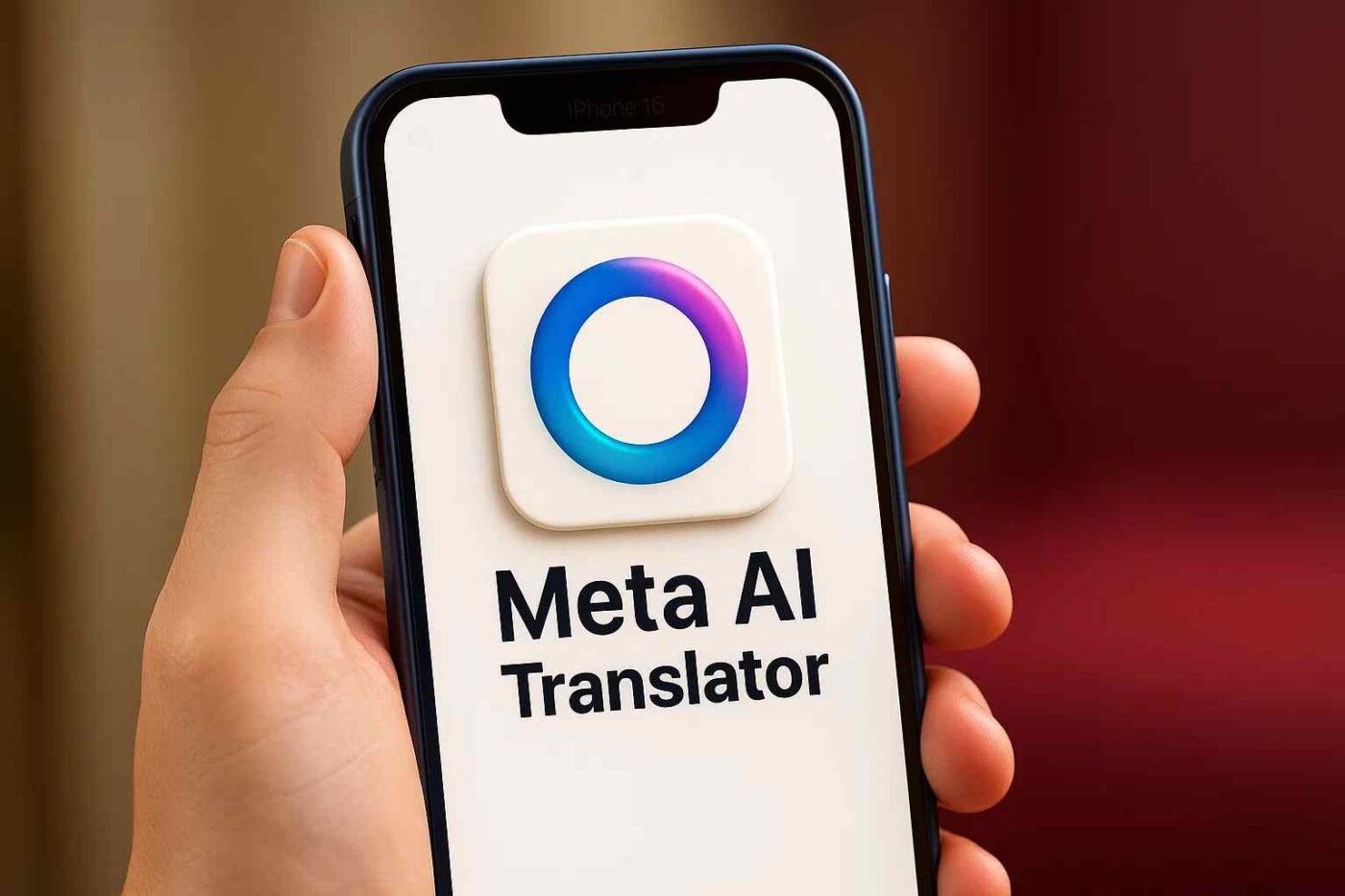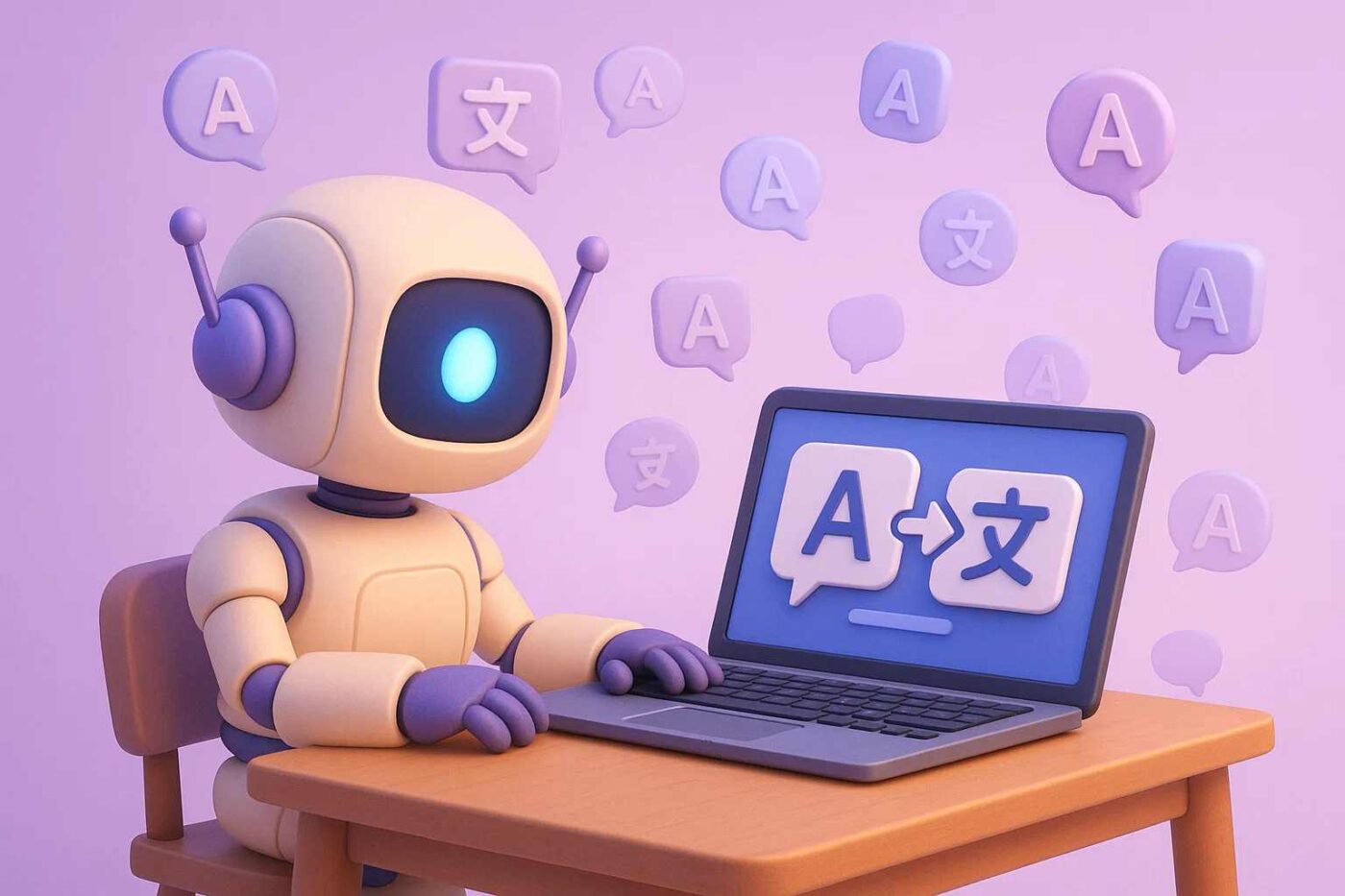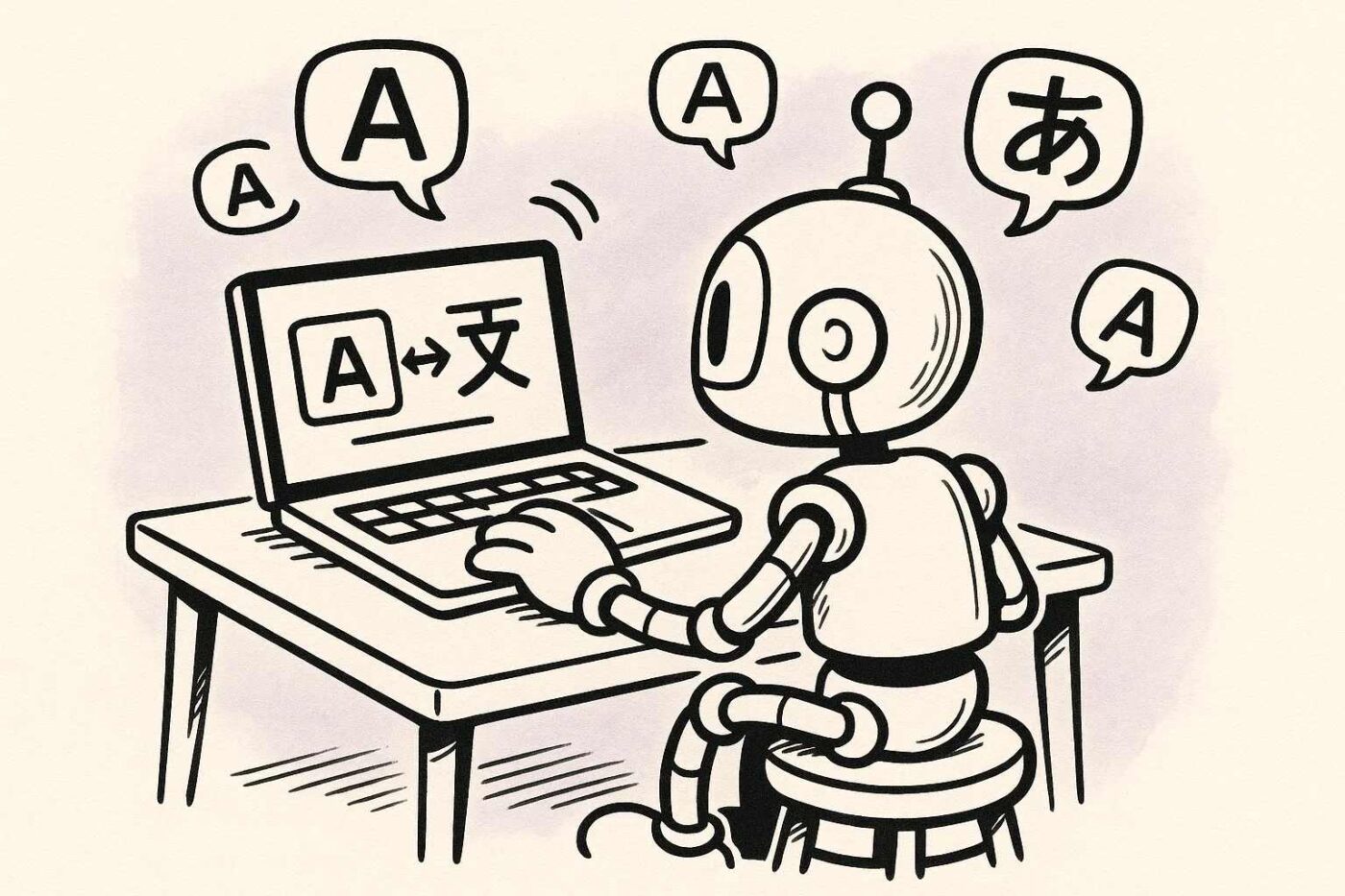How To use AI Translation Services In E-Commerce
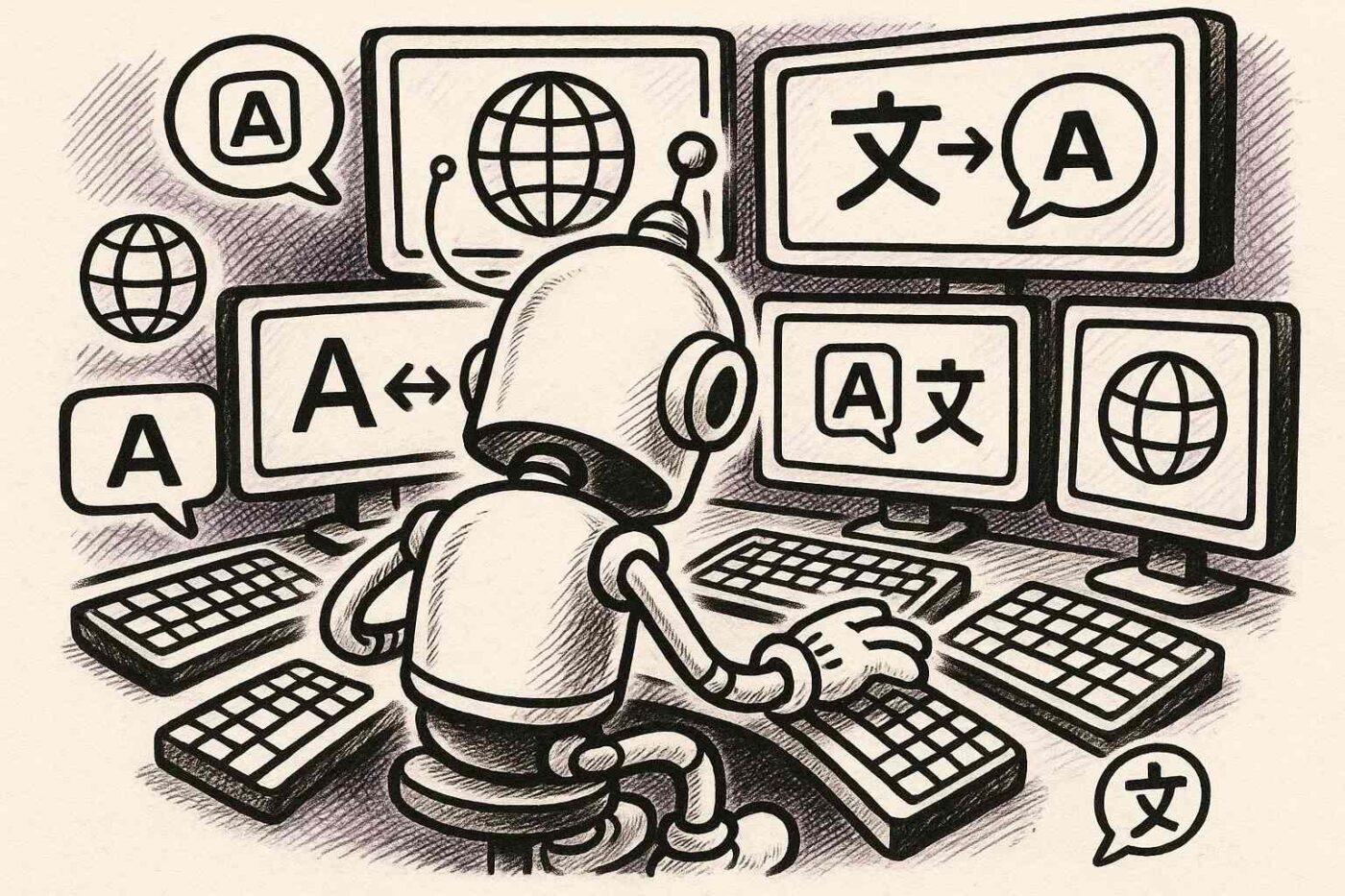
I’ve worked with multiple stores that translated 500,000+ products through the infrastructure that I’ve built, and I’m here to show you how to use AI translation services in E-Commerce.
AI translation is essential, and AI translation services are everywhere. (not all of them are good, tho)
Here’s a list with the best AI translation services.
I will be transparent from the start, I’ve built the best AI translation service on the market (Ovesio), and I’m biased towards it… but what you will learn today will be applicable to any other service.
We will talk about:
1. How AI Translation Services Work
2. How To Make AI Translation Reliable
3. How Many Products Can You Translate In A Day
4. Best Way To Display Translations For SEO
Let’s jump right in:
How AI Translation Services Work
Some of you might ask: Is ChatGPT good at translation?
Some of you might be thinking about Google Translate.
Comparing these two might be like comparing a car and a skateboard.
Yes, they both help you travel faster, and both of them have 4 wheels… But they work differently.

Similarly to ChatGPT, which is an LLM (Large Language Model) and Google Translate, which is an NMT (Neural Machine Translation model).
NMTs are used only for translation, whereas LLMs are used for many other things.
Which means that NMTs will provide more accurate word-for-word translations… but it will fail when the context is not sufficient or the initial text is spelled wrong.
LLMs, on the other hand, will not provide direct correspondence between words from a language to another, but it will preserve the meaning every single time. Also, if something is misspelled in the initial text, it will be able to catch that and figure out what should’ve been there.
LLMs are great for product descriptions that must sell.
NMTs are great for legal documents and contracts.
But not always…
The ideal scenario would be a hybrid.
No matter what you choose, you will still need a developer to integrate it into your store through the API (application programmable interface).
Looking for the best free AI translator?
Even that must be integrated through API and the API is not free 🙂
How To Make AI Translation Reliable
AI translation used to be extremely unreliable.
Not because of the NMTs or LLMs, but mainly because of inconsistency.
The same NMT will translate the same text always the same… which is part of the problem because if it’s translated wrong, it will always be wrong.
LLMs, on the other hand, will always translate it differently but preserve the meaning… which is also part of the problems because you want the best translation as it is. Not just the meaning.
You can make AI translation tools reliable in two ways:
Supervised-Translation
Using AI to bulk-translate all the texts, and then you come and check for errors.
Which is time-consuming, and you’re required to know the language you want to translate into.
Or the second option…
Combining Models With Automated QA
You can have the best of both worlds by combining NMTs and LLMs and then having an automated process that detects the errors and uses only the best parts from each translation.
Well, as far as I know, Ovesio is the only AI translator that does this.
With Ovesio, you have the best AI translators on the market (NMTs and LLMs) integrated under the hood.
Each piece of text is translated with all the models you select, and then their Ovesio AI Inspector will choose the best parts from each translation.
This way, you have the best ai translation possible with AI.
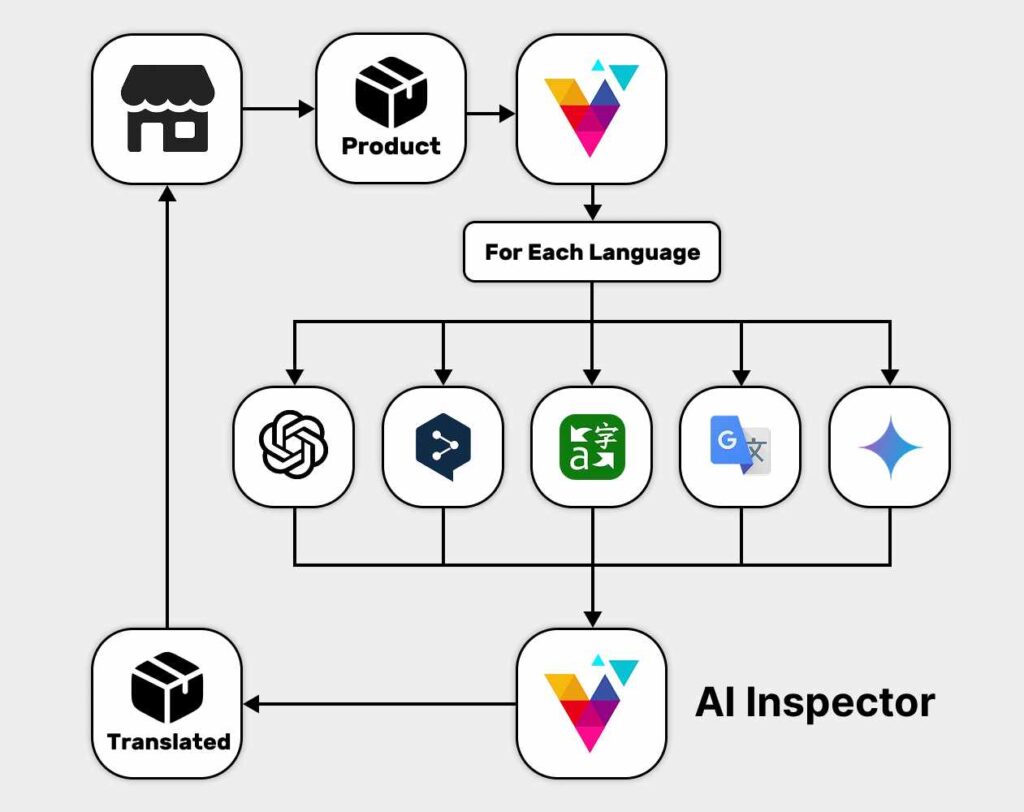
How Many Products Can You Translate In A Day
This depends a lot on how many languages you want your products to be translated in, and also on the translation service you will use.
I can speak only for Ovesio.
Right now, before a big hardware upgrade, Ovesio can translate up to 1,000 products per hour.
Best Way To Display Translations For SEO
The best way to display the translated products is by having the translated version on a different URL.
For example, your English product is at:
https://mystore.com/en/productAnd the product in French will be at:
https://mystore.com/fr/productThis way Google will index both pages for different languages and they will be served properly to each audience.
Conclusion
The translation process from start to finish will look something like this:
- Product is added to the store
- Product is sent to Ovesio
- Ovesio uses multiple translators to translate the product
- Ovesio uses AI Inspector to compile the best translation
- Ovesio sends the product back to your store
- Your store (programmatically) will add the translated version to the new URL
If you want to use Ovesio, we have an extensive documentation here: AI translation docs
If you’re wondering if AI for translation is a good idea, check this article.



